
Index Comunicacion
Scope & Guideline
Connecting ideas that shape the future of communication.
Introduction
Aims and Scopes
- Media Trust and Disinformation:
Researching the dynamics of media credibility, trust, and the impact of disinformation across various contexts, particularly in social media and digital platforms. - Digital Literacy and Social Media Engagement:
Investigating how digital literacy affects user engagement with social media, including the dissemination and consumption of information among diverse demographic groups. - Civic Engagement and Activism:
Examining the role of media and communication in fostering civic engagement and activism, especially among marginalized communities and during significant socio-political events. - Ethnographic and Comparative Studies:
Employing ethnographic and comparative methodologies to analyze media practices across different cultural and geographical contexts, including the impact of local narratives on global issues. - Innovations in Journalism and Communication:
Exploring innovations in journalism, including the use of artificial intelligence and fact-checking measures, and their implications for the future of media practices.
Trending and Emerging
- Disinformation and Media Trust:
Recent publications highlight the urgent need to understand the relationship between disinformation and public trust in media, a theme that has gained significant traction in light of recent global events. - Impact of Social Media on Civic Engagement:
There is a growing focus on how social media platforms facilitate civic engagement and activism, particularly among marginalized groups, indicating an evolving landscape of public discourse. - Digital Literacy and Fake News:
Research surrounding digital literacy, particularly among younger demographics, is on the rise, emphasizing the importance of critical thinking skills in navigating the information landscape. - Artificial Intelligence in Journalism:
The integration of artificial intelligence in journalism practices is becoming a prominent topic, focusing on its implications for news production and dissemination. - Media Representation and Diversity:
An increasing emphasis on how media represents diverse communities and narratives, particularly regarding migration and gender issues, reflects a broader societal push for inclusivity.
Declining or Waning
- Neuromarketing Research:
Once a growing area of interest, research on neuromarketing is now less frequently addressed, indicating a shift towards more pressing social issues like disinformation and media trust. - Traditional Media Analysis:
There is a noticeable decline in research focusing exclusively on traditional media formats, as the journal increasingly prioritizes digital and social media studies. - Historical Media Studies:
Themes centered on historical perspectives of media practices are becoming less frequent, suggesting a pivot towards contemporary issues and immediate relevance. - Youth Media Consumption Patterns:
While still relevant, the focus on youth media consumption patterns has waned, possibly overshadowed by broader themes of digital literacy and civic engagement.
Similar Journals

Transnational Screens
Transforming Perspectives on Art and Communication WorldwideTransnational Screens is a premier academic journal published by Taylor & Francis Ltd, focusing on the dynamic intersections of visual arts, performing arts, and communication in a globalized context. Since its inception, the journal has garnered significant recognition, featuring in the Q1 category for Visual Arts and Performing Arts and Q3 for Communication as of 2023, reflecting its influential contributions to these fields. With a Scopus ranking placing it in the 78th percentile in Visual Arts and Performing Arts, this journal serves as a vital platform for researchers, professionals, and students aiming to explore the implications of transnational narratives in contemporary media and artistic practices. The journal is accessible to a diverse readership and promotes open dialogue through its commitment to publishing innovative and interdisciplinary research from 2020 to 2024. As a key resource for understanding the complexities of transnational screens, it invites submissions that push the boundaries of traditional scholarship and engage with pressing global issues through the lens of the visual and performing arts.

Revista Comunicacao Midiatica
Fostering Dialogue in Communication and Cultural StudiesRevista Comunicação Midiática is a prominent academic journal focusing on the fields of communication, media studies, and cultural dynamics, published by Universidade Estadual Paulista Júlio Mesquita Filho, Facility of Architecture, Arts & Communication. With its ISSN 2236-8000, this journal aims to disseminate innovative research, theoretical advancements, and practical insights that contribute to a deeper understanding of communication processes in contemporary society. Although it currently does not provide Open Access options, the journal serves as a valuable resource for researchers, professionals, and students who are keen to explore the intricate relationships between media and culture. Located in Bauru, Brazil, the journal is committed to fostering multidisciplinary dialogue and enhancing scholarly discourse, making it an invaluable addition to the academic landscape in the realm of media studies.
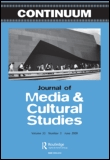
Continuum-Journal of Media & Cultural Studies
Pioneering discussions in the evolving world of media.Continuum-Journal of Media & Cultural Studies, published by Routledge Journals, Taylor & Francis Ltd, stands as a premier platform for scholarly discourse in the fields of media studies, cultural studies, visual arts, and performing arts. With an impressive Q1 ranking in both Cultural Studies and Visual Arts and Performing Arts for 2023, this journal exemplifies scholarly excellence, attracting high-impact research and innovative ideas that contribute significantly to the academic community. The journal does not currently offer open access, but its rigorous peer-review process ensures that published articles maintain the highest standards of academic integrity and relevance. With a comprehensive coverage period from 1980 to 2024, Continuum addresses critical issues and explores diverse methodologies, making it an essential resource for researchers, professionals, and students alike. Whether you're looking to deepen your understanding of contemporary cultural dynamics or seeking to share your research with a discerning audience, Continuum provides a vital space for transformative dialogue and engagement.
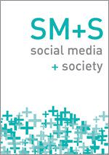
Social Media + Society
Advancing Knowledge at the Intersection of Technology and CultureSocial Media + Society is a premier, open access journal published by SAGE Publications Ltd, dedicated to the interdisciplinary exploration of social media's impact on society. Since its inception in 2015, this journal has rapidly established itself as a leading platform for scholarly discourse, evidenced by its impressive Q1 rankings across multiple categories, including Communication, Computer Science Applications, and Cultural Studies, as of 2023. With a Scopus ranking placing it in the top percentiles of its field, Social Media + Society provides profound insights into the evolving dynamics of social media technologies, their applications, and societal repercussions. The journal aims to foster a critical dialogue among researchers, professionals, and students, ensuring accessibility through its open access model, which allows readers to engage with cutting-edge research without barriers. Published in the United Kingdom, it serves as a vital resource for anyone interested in understanding the complex intersections of digital communication, culture, and technology.
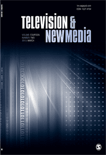
Television & New Media
Navigating the Intersection of Screens and SocietyTelevision & New Media is a leading academic journal dedicated to the exploration of the intricate relationships between television, new media technologies, and contemporary culture. Published by SAGE Publications Inc, this journal boasts an impressive impact factor, placing it in the prestigious Q1 category for both Cultural Studies and Visual Arts and Performing Arts as of 2023. Its high rankings in Scopus—#8 in Visual Arts and Performing Arts and #24 in Cultural Studies—underscore its significance in the academic community, reflecting its robust contribution to the discourse on media and culture. Spanning from 2000 to 2024, the journal features cutting-edge research that offers insights into the evolving dynamics of media and its societal implications, making it an essential resource for researchers, professionals, and students alike. Although currently not open access, the journal ensures that its contents are accessible through academic libraries, facilitating the dissemination of knowledge in an ever-changing digital landscape.
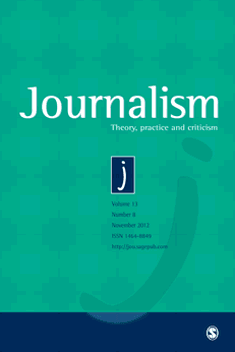
Journalism
Illuminating the Intersection of Ethics, Politics, and CommunicationJournalism is a leading interdisciplinary journal published by SAGE Publications Inc, renowned for its rigorous academic standards and impactful research. With an ISSN of 1464-8849 and E-ISSN 1741-3001, the journal has established itself within the top quartile of both the Arts and Humanities and Communication fields, boasting an impressive rank of 22nd out of 552 in Arts and Humanities (miscellaneous) and 35th out of 511 in Social Sciences (Communication) as of 2023. This journal, based in the United Kingdom, is committed to fostering scholarly dialogue surrounding journalism’s evolving role in society, covering a wide range of topics including media ethics, digital communication, and the impact of state and global politics on public discourse. Notably, the journal does not offer open access, enhancing its exclusive appeal to academics and professionals. With a focused scope that extends from 2000 to 2024, Journalism contributes to the understanding of emerging trends and challenges, making it an invaluable resource for researchers, practitioners, and students alike seeking to engage deeply with contemporary issues in the field.
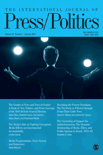
International Journal of Press-Politics
Illuminating the Role of Media in Shaping Political NarrativesThe International Journal of Press-Politics, published by SAGE Publications Inc, stands as a premier scholarly platform at the intersection of communication, sociology, and political science. With a distinguished history dating back to its inception in 2003 and maintaining its relevance through 2024, this journal is recognized in the academic community for its rigorous exploration of the dynamics between the media and political processes. The journal proudly holds a Q1 ranking in both Communication and Sociology and Political Science categories, placing it in the top tier of its field, underscored by its impressive Scopus rankings, which reflect its global influence and reach. With an intention to foster innovative research and discourse, IJPP is committed to being accessible, contributing significantly to the understanding of how press and politics shape societal narratives, thus serving as an essential resource for researchers, professionals, and students alike. Explore this esteemed journal to engage with cutting-edge studies that drive the field forward.
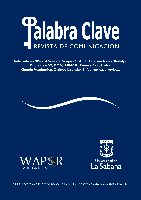
Palabra Clave
Championing Research that MattersPalabra Clave is a leading open-access journal published by the UNIV SABANA, FAC COMUNICACION in Colombia, dedicated to advancing the fields of Arts and Humanities as well as Communication. Since its inception in 2001, the journal has committed to providing a platform for innovative research and critical discourse, garnering an impressive Q2 classification in both respective fields. The journal is indexed in Scopus, with a commendable ranking of #26 out of 173 in Arts and Humanities, representing the 85th percentile, and #263 out of 511 in the Communication category, indicating its significant impact within the academic community. With its converged years from 2012 to 2024, Palabra Clave encourages scholars, professionals, and students to engage with contemporary issues through a lens of interdisciplinary scholarship. Accessible through its open-access model, this journal fosters the democratization of knowledge and aims to connect researchers across the globe.
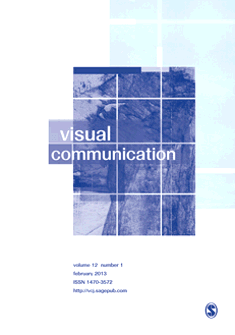
Visual Communication
Fostering Innovative Dialogues in Visual Arts.Visual Communication, published by SAGE Publications Inc, is a leading journal in the fields of Communication and Visual Arts and Performing Arts, recognized for its significant contribution to theoretical advancements and empirical research. With an impressive impact factor and ranked in the Q2 quartile for Communication and Q1 for Visual Arts and Performing Arts, this journal attracts a diverse audience of researchers, professionals, and students dedicated to exploring the multifaceted nature of visual communication. Spanning from 2002 to 2024, the journal publishes high-quality articles that delve into the intricate relationship between visual culture and communication practices. It consistently ranks favorably within Scopus, placing in the 97th percentile for Visual Arts and Performing Arts and the 76th percentile for Communication, making it a vital resource for those seeking to advance their understanding of visual discourse. While the journal is not open access, its subscription model ensures rigorous peer review, thereby maintaining high academic standards. The global reach of Visual Communication solidifies its role as an essential platform for innovative dialogue and scholarship within the academic community.
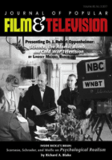
JOURNAL OF POPULAR FILM AND TELEVISION
Celebrating the Art of Storytelling in Popular Media.JOURNAL OF POPULAR FILM AND TELEVISION, published by Routledge Journals, Taylor & Francis Ltd, stands as a significant platform for academic discourse in the realms of cultural studies, visual arts, and performing arts. With its ISSN: 0195-6051 and an evolving digital presence indicated by its E-ISSN: 1930-6458, the journal has carved out a respected niche since its inception in 1978, continuing to contribute to scholarly discussions through 2024. Its impact within the academic community is underscored by a Q3 ranking in Cultural Studies and a Q2 ranking in Visual Arts and Performing Arts for 2023, highlighting its relevance across diverse fields. Notably, with a Scopus ranking placing it in the 74th percentile among visual arts and performing arts journals, it serves as an essential reference point for researchers, professionals, and students committed to the critical examination of film and television. Although not an open-access journal, it provides valuable insights and analysis that enrich understanding of popular media's impact on society. The journal's location in the United States, with a headquarters in Abingdon, England, further affirms its international scope and influence.